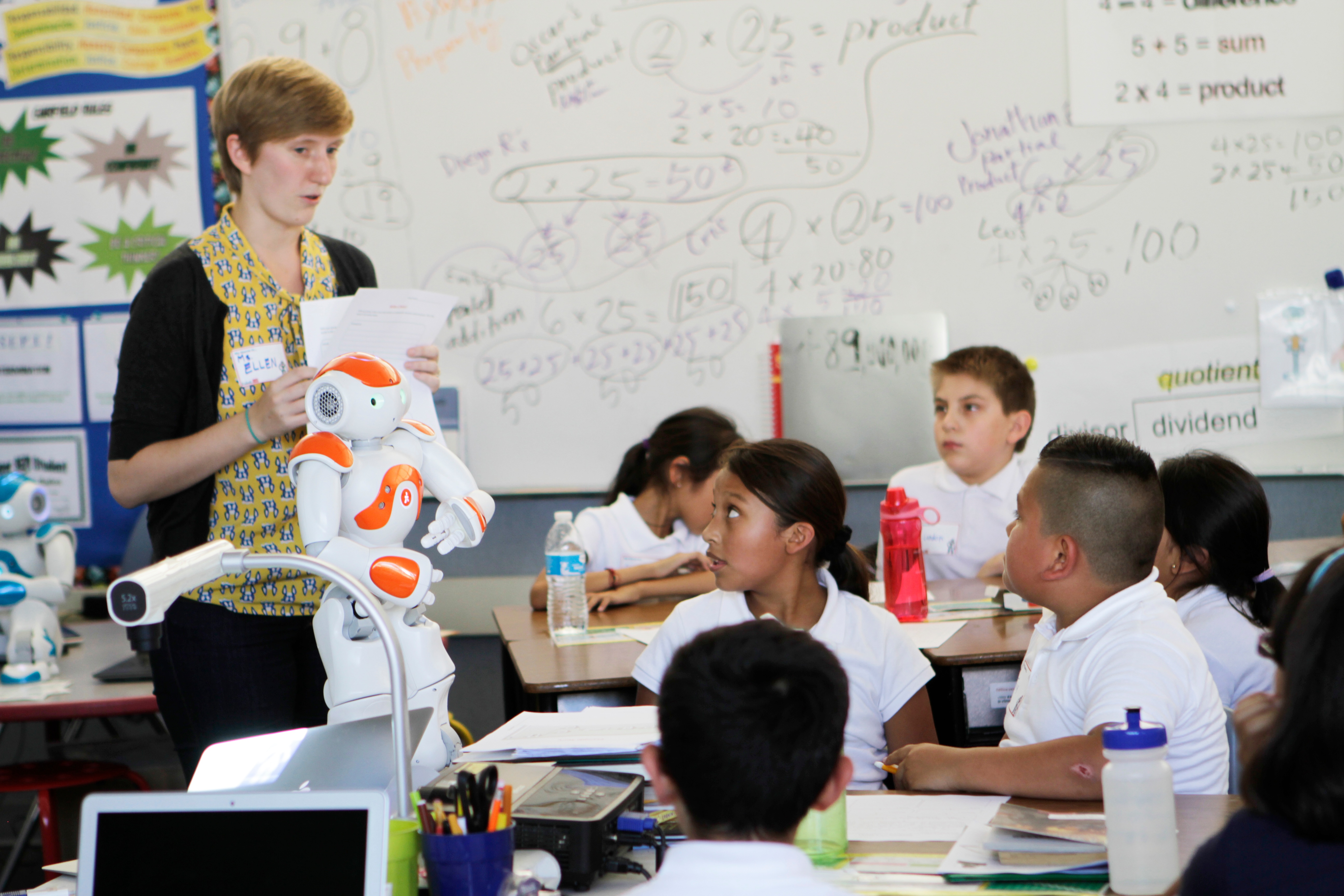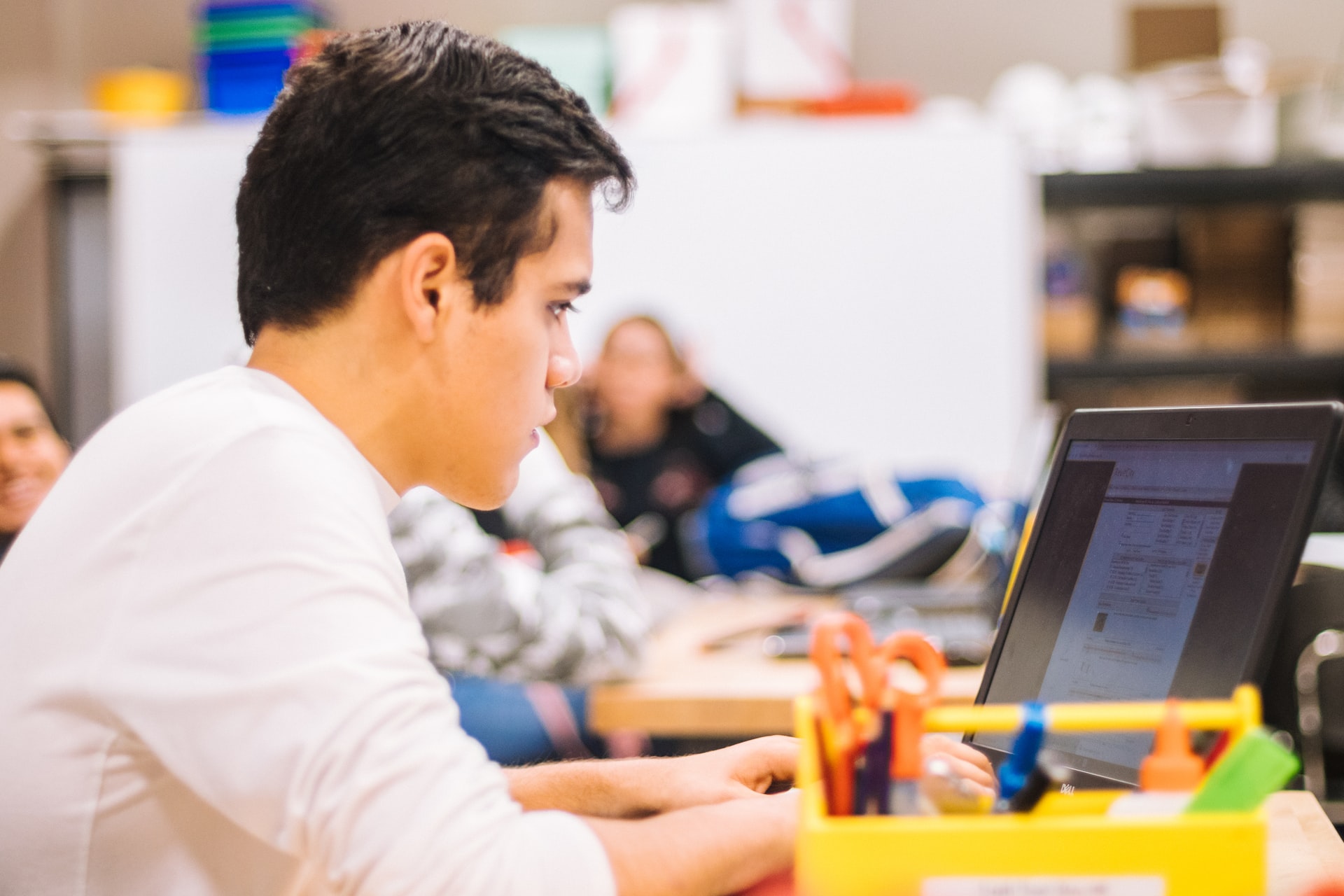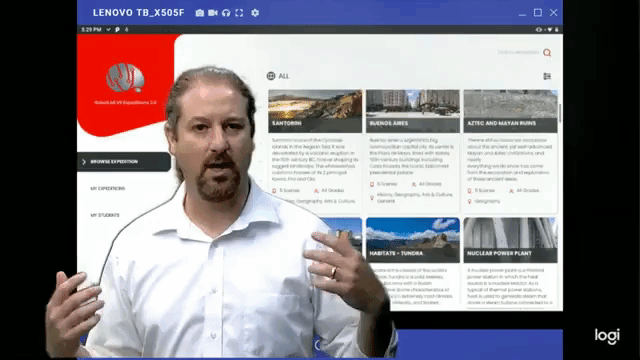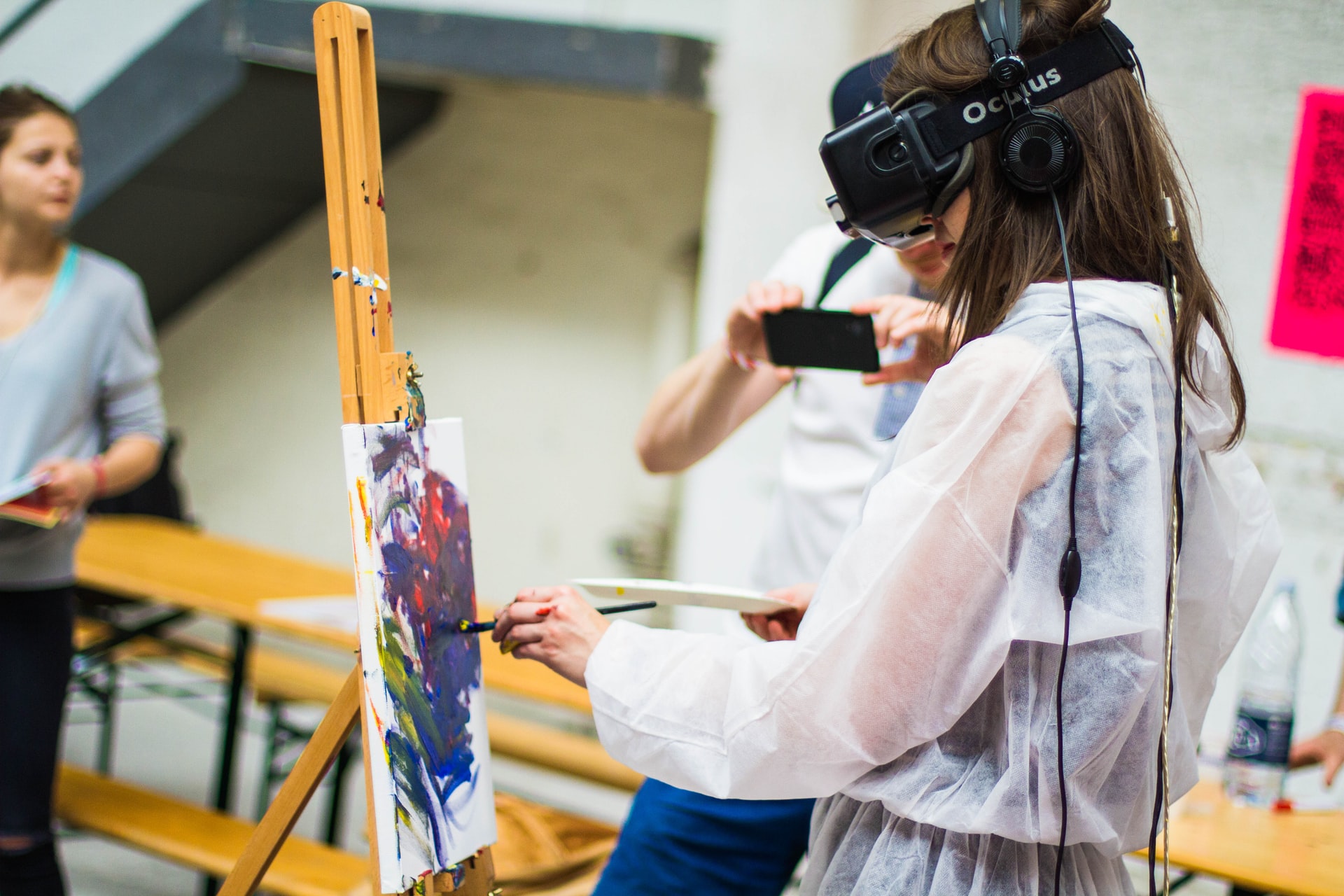How AI is revolutionizing education
By Hosni Zaouali, CEO & Chief Innovation Designer, Tech-AdaptiKa
 Photo by Possessed Photography on Unsplash
Photo by Possessed Photography on Unsplash
AI has incredible potential, but it will work best when the human element remains
- 0 Comments
- Apr 14, 2021 10:00:00 AM
- Posted by Natalia Galvis
- Topics: Robotics, STEM, teachers, Coding, Robots,, students, Edchat, teaching, online, distance learning, collaboration
How Robots Can Make Teachers' Job Easier
By Gregory Chapman

Finding robots in the modern workplace and around the household is common. It assists humans with different tasks. The continuous growth of robotics technology, adaptability, and adoption in the modern world, will make more jobs easier.
Artificial intelligence-powered robots are already used for manufacturing, internet search engines, military combat, and rescue missions. They are taking a lot of human jobs lost to the pandemic at an alarming rate and will take more.
One sector that has largely not felt the threat of robots replacing humans is education. But there is a growing use of robots in educating kindergarten and elementary students. The question is, "When should teachers start feeling threatened by robotics in education"?
This article will take a cursory look at the pros and cons of robotics in education. And also how robots can make teachers' jobs easier.
- 0 Comments
- Apr 12, 2021 10:00:00 AM
- Posted by Natalia Galvis
- Topics: Robotics, STEM, teachers, Coding, Robots,, students, Edchat, teaching, online, distance learning, collaboration
7 predictions about fall back-to-school with COVID
 Photo by Paul Siewert on Unsplash
Photo by Paul Siewert on Unsplash
Although promising signs indicate the COVID pandemic is becoming more manageable, it's reasonable to expect the back-to-school season to look different.
- 0 Comments
- Apr 7, 2021 10:00:00 AM
- Posted by Natalia Galvis
- Topics: Robotics, About the Robots, EdTech, STEM, Curriculum, teachers, students, Technology, VR, Realidad Virtual, Edchat, Digital Technology, teaching, online, Virtual Reality, lessons, eLearning, Automation, Expeditions 2.0
Two Ways to Bring Games Into Your Classroom
By Hubert Ham
 Photo by Fredrick Tendong on Unsplash
Photo by Fredrick Tendong on Unsplash
Gamification and game-based learning are different instructional strategies, but both can work wonders for student engagement.
- 0 Comments
- Apr 6, 2021 10:00:00 AM
- Posted by Natalia Galvis
- Topics: Robotics, About the Robots, EdTech, STEM, Curriculum, teachers, students, Technology, VR, Realidad Virtual, Edchat, Digital Technology, teaching, online, Virtual Reality, lessons, eLearning, Automation, Expeditions 2.0
5 Ways To Transform How STEM Is Taught In Schools
By Fabricio Pamplona
 Photo by Jeswin Thomas on Unsplash
Photo by Jeswin Thomas on Unsplash
STEM is a crucial part of any student’s curriculum, right from the initial phase of their educational journey. In their formative years, the skills and knowledge gained by students are much more concrete and reflect in the way they approach their professional lives. Considering this, facilitating STEM learning requires educators and students to collaborate so that the learning experience can be successful and goal-oriented.
With the amount of information that students consume today, it is a great challenge for educators to create unique learning experiences. However, with the right tools and technologies, educators can truly create memorable STEM learning experiences that can help students learn and grow.
Here are a few ways in which you can transform how you teach STEM subjects to your students:
- 0 Comments
- Apr 5, 2021 10:00:00 AM
- Posted by Natalia Galvis
- Topics: Robotics, About the Robots, EdTech, STEM, Curriculum, teachers, students, Technology, VR, Realidad Virtual, Edchat, Digital Technology, teaching, online, Virtual Reality, lessons, eLearning, Automation, Expeditions 2.0
10 EdTech trending topics in higher education right now
 Photo by Annie Spratt on Unsplash
Photo by Annie Spratt on Unsplash
The changes set in motion in 2020 offered the world of higher education the chance to explore new opportunities and get a deeper understanding of matters previously only partially uncovered. Technology played a major role in this respect: in fact, with the massive shift to remote and hybrid schedules, EdTech helped completely reshape learning and teaching. The following list features 10 EdTech trending topics in higher education to keep an eye on right now and in the future post-pandemic world.
- 0 Comments
- Apr 2, 2021 10:00:00 AM
- Posted by Natalia Galvis
- Topics: Robotics, About the Robots, EdTech, STEM, Curriculum, teachers, students, Technology, VR, Realidad Virtual, Edchat, Digital Technology, teaching, online, Virtual Reality, lessons, eLearning, Automation, Expeditions 2.0
IoT: future applications in K-12 and higher education
 Photo by Timothy Muza on Unsplash
Photo by Timothy Muza on Unsplash
The Internet of Things (IoT) is a network of interrelated physical objects connected through the internet, which has found several applications in the education world in recent years, from K-12 to higher education.
The purpose of this connection? To put it simply, to exchange and transfer data without requiring direct intervention. IoT has become an integral part of the innovation brought to schools by EdTech in recent years, and even though it is not as widespread as of now, it will soon find its way into more and more institutions in the upcoming years.
- 0 Comments
- Apr 1, 2021 10:00:00 AM
- Posted by Natalia Galvis
- Topics: Robotics, About the Robots, EdTech, STEM, Curriculum, teachers, students, Technology, VR, Realidad Virtual, Edchat, Digital Technology, teaching, online, Virtual Reality, lessons, eLearning, Automation, Expeditions 2.0
Poly by Google will be shutting down forever on June 30, 2021
This is a reminder that one month from today, on April 30, 2021, Poly by Google we’ll be shutting down the ability to upload models directly on the Poly website or via API.

- 0 Comments
- Mar 31, 2021 10:00:00 AM
- Posted by Natalia Galvis
- Topics: Robotics, About the Robots, EdTech, STEM, Curriculum, teachers, students, Technology, VR, Realidad Virtual, Edchat, Digital Technology, teaching, online, Virtual Reality, lessons, eLearning, Automation, Expeditions 2.0
Google Expedition Replacement from RobotLAB

Hello everyone. My name is Elad Inbar. I'm the CEO for RobotLAB. Today I'm going to talk to you about VR Expeditions, 2.0. As you probably heard, Google decided to discontinue Google expeditions. Somewhere mid-June, they will basically shut down their servers and we will lose access to all the expeditions and all the resources that they put together over the years. It's unfortunate, but that's their decision.
- 1 Comments
- Mar 29, 2021 10:00:00 AM
- Posted by Natalia Galvis
- Topics: Robotics, About the Robots, EdTech, STEM, Curriculum, teachers, students, Technology, VR, Realidad Virtual, Edchat, Digital Technology, teaching, online, Virtual Reality, lessons, eLearning, Automation, Expeditions 2.0
How to use VR for engaging art lessons
 Photo by Billetto Editorial on Unsplash
Photo by Billetto Editorial on Unsplash
Using VR to give students engaging art education experiences isn't complicated--check out these resources to get started.
- 0 Comments
- Mar 25, 2021 10:00:00 AM
- Posted by Natalia Galvis
- Topics: Robotics, About the Robots, EdTech, STEM, Curriculum, teachers, students, Technology, Edchat, Digital Technology, teaching, online, lessons, eLearning, Automation
Relevant Posts
Popular Posts
Subscribe to Email Updates
-
I Want To Learn MoreADDITIONAL INFORMATION


